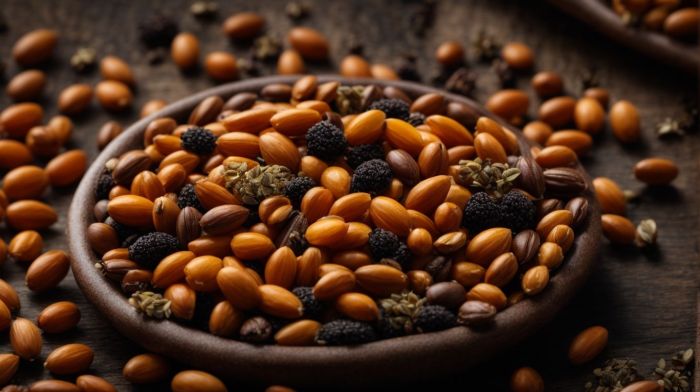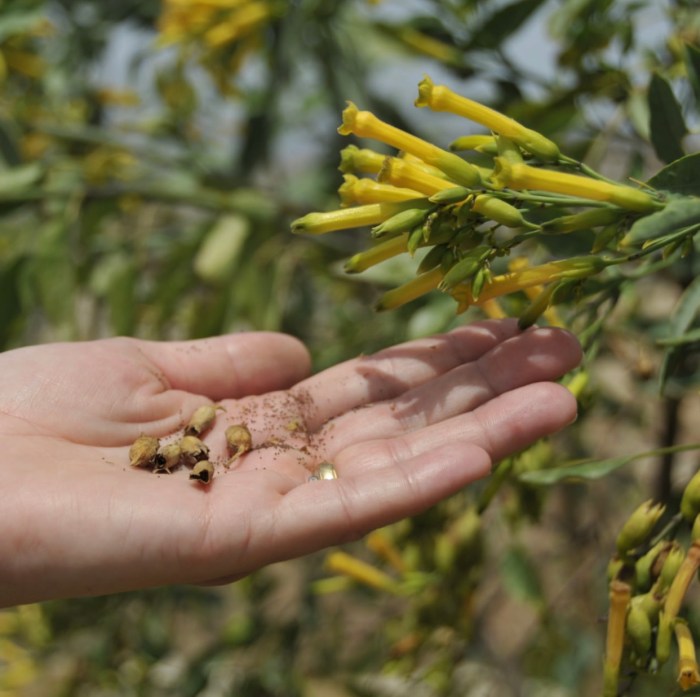Can You Save Seeds From Hybrid Plants?
Understanding Hybrid Plants
Can you save seeds from hybrid plants – Hybrid plants are the result of cross-breeding two different parent plants, combining desirable traits from each. This process, known as hybridization, is widely used in agriculture and horticulture to create plants with improved characteristics such as increased yield, disease resistance, or enhanced aesthetic appeal. Understanding the genetic makeup of hybrids is crucial for seed saving endeavors.
Hybrid Plant Creation
Hybrid plant creation involves carefully selecting parent plants with complementary traits. Pollen from one parent is transferred to the stigma of the other, resulting in fertilization and the development of hybrid seeds. This process often requires controlled environments to prevent unintended pollination from other plants. Breeders meticulously select parents for specific combinations of desirable traits.
Genetic Makeup of Hybrid Plants
Unlike open-pollinated varieties, which breed true to type, hybrid plants have a heterozygous genetic makeup. This means they possess different alleles (gene variations) for many traits, inherited from their diverse parents. This genetic diversity is what often leads to the superior characteristics of hybrids, but it also means that seeds saved from hybrids won’t consistently produce offspring identical to the parent plant.
Examples of Common Hybrid Plants
Many common garden plants are hybrids. For example, many popular tomato varieties are hybrids, often bred for disease resistance and fruit size. Similarly, many hybrid corn varieties are developed for higher yields and improved nutritional content. Hybrid peppers often exhibit improved flavor and fruit size compared to their open-pollinated counterparts. Many commercially available flowers, such as petunias and zinnias, are also hybrids.
Comparison of Hybrid and Open-Pollinated Plants
| Characteristic | Hybrid Plant | Open-Pollinated Plant |
|---|---|---|
| Genetic Makeup | Heterozygous | Homozygous |
| Seed Production | Offspring may vary significantly | Offspring generally resemble parent plant |
| Yield/Fruit Size | Often higher yield and larger fruits | Yield and fruit size may be less consistent |
| Disease Resistance | Often improved disease resistance | Disease resistance can vary |
Seed Saving Basics: Can You Save Seeds From Hybrid Plants
Saving seeds is a rewarding process that allows gardeners to preserve their favorite plant varieties. However, successful seed saving requires understanding the specific needs of each plant and employing proper techniques to ensure seed viability.
Essential Tools and Techniques for Seed Collection, Can you save seeds from hybrid plants

Source: thespruce.com
Basic tools include clean containers for collecting seeds, scissors or pruners for harvesting seed heads, and paper bags or envelopes for storing seeds. Techniques vary depending on the plant type; some seeds are easily collected from dry seed pods, while others require more careful handling to prevent damage. Always use clean, dry tools to avoid introducing pathogens or contaminants.
Optimal Timing for Seed Harvesting

Source: performancedriversclub.org
The ideal time for seed harvesting varies widely depending on the plant. For many plants, seeds are ready when they are fully mature and dry. This is often indicated by a change in color (e.g., turning brown or black) and the ease with which seeds detach from the plant. For example, sunflower seeds are ready when the back of the flower head turns brown and the seeds are easily removed.
However, some plants require specific conditions for seed maturation, like a period of frost for certain vegetables.
Proper Seed Drying and Storage Methods
After harvesting, seeds need to be properly dried to prevent mold and maintain viability. This is typically done in a cool, dry, and well-ventilated area. Seeds should be spread out thinly on a screen or paper towels to allow for airflow. Once thoroughly dry, seeds can be stored in airtight containers in a cool, dark, and dry place.
Proper storage is critical for seed longevity. Consider using silica gel packets to absorb excess moisture and prevent mold.
Step-by-Step Seed Saving Guide
- Select mature seed heads: Choose seed heads that are fully developed and show signs of maturity (e.g., color change, dryness).
- Harvest seeds carefully: Gently remove seeds from the seed heads, taking care not to damage them. For some plants, this may involve threshing (rubbing the seed heads together to release the seeds).
- Clean seeds: Remove any debris, such as stems or leaves, from the collected seeds. For some seeds, this may involve winnowing (using the wind to separate lightweight chaff from the heavier seeds).
- Dry seeds thoroughly: Spread seeds thinly on a screen or paper towels in a cool, dry, and well-ventilated area for several days to several weeks, depending on the seed type and moisture content.
- Store seeds properly: Once dry, store seeds in airtight containers in a cool, dark, and dry place. Label containers with the plant name and date of harvest.
The Challenges of Saving Hybrid Seeds
Saving seeds from hybrid plants presents unique challenges due to their heterozygous genetic makeup. The offspring from hybrid seeds will not be genetically identical to the parent plant and will exhibit a wide range of variations.
Genetic Implications of Saving Hybrid Seeds
Because hybrid plants are heterozygous, the offspring from their seeds will inherit a mix of alleles from both parent plants. This means the offspring will show a wide range of variations in their traits, unlike open-pollinated plants which produce more consistent offspring. This variation can be unpredictable, leading to plants with traits that are less desirable than the parent plant.
Potential Variations in Offspring from Hybrid Seeds
The offspring from hybrid seeds may exhibit a wide range of variations in traits such as plant height, fruit size, color, flavor, and disease resistance. Some offspring may resemble one parent more closely than the other, while others may display a combination of traits from both parents. Some may even exhibit traits that are less desirable than either parent.
Saving seeds from hybrid plants usually isn’t recommended, as the offspring won’t reliably inherit the parent plant’s desirable traits. This is quite different from considering the timing of planting, such as whether can you plant pumpkin seeds in november , which depends on your climate. Therefore, while planting timing is crucial, seed saving from hybrids often yields unpredictable results.
Comparison of Offspring and Parent Plant Characteristics
| Characteristic | Parent Hybrid Plant | Offspring from Hybrid Seed |
|---|---|---|
| Fruit Size | Large, uniform | Variable, some smaller than parent |
| Disease Resistance | High | Variable, some may be susceptible |
| Yield | High | Variable, some may have lower yield |
| Plant Height | Uniform | Variable, some taller or shorter |
Alternative Methods for Propagating Hybrid Plants
Since saving seeds from hybrid plants often results in unpredictable offspring, vegetative propagation methods are often preferred for preserving desirable traits in hybrid plants. These methods create genetically identical copies of the parent plant.
Vegetative Propagation Methods
Vegetative propagation involves creating new plants from vegetative parts of the parent plant, such as stems, leaves, or roots. Common methods include cuttings, layering, and grafting.
Cuttings
Cuttings involve taking a stem cutting from the parent plant and rooting it to create a new plant. A stem cutting, typically 4-6 inches long, is taken from a healthy, actively growing stem. The lower leaves are removed, and the cutting is dipped in rooting hormone before being planted in moist potting mix. Regular watering and humidity are crucial for successful rooting.
Layering
Layering involves bending a stem to the ground, burying a portion of it, and allowing roots to develop before separating it from the parent plant. This method is particularly suitable for plants with flexible stems. A portion of the stem is buried, and the tip is left exposed. Once roots have developed, the layered stem can be separated from the parent plant and transplanted.
Grafting
Grafting involves joining a scion (a cutting from the desired plant) onto a rootstock (an established plant). This technique is commonly used for fruit trees and other woody plants. The scion and rootstock are carefully joined, and the graft union is protected to allow for healing and growth. Successful grafting requires precise technique and careful attention to detail.
Open-Pollinated Alternatives
Open-pollinated varieties offer a viable alternative to hybrid plants, particularly for gardeners interested in seed saving. These varieties breed true to type, meaning their offspring will closely resemble the parent plant.
Open-Pollinated Varieties with Similar Characteristics
Many open-pollinated varieties exist that offer similar characteristics to popular hybrid plants. For example, heirloom tomato varieties often offer a wide range of flavors and colors comparable to hybrid tomatoes, though their yields might be slightly lower. Similarly, many open-pollinated flower varieties boast vibrant colors and prolific blooms comparable to their hybrid counterparts.
Benefits and Drawbacks of Open-Pollinated vs. Hybrid Plants

Source: punkmed.com
Open-pollinated plants offer the advantage of seed saving, allowing gardeners to maintain their preferred varieties over time. However, they may exhibit lower yields, less disease resistance, and less uniform fruit size compared to hybrids. Hybrids, on the other hand, typically offer higher yields and improved disease resistance, but their seeds cannot be reliably saved to produce identical offspring.
Comparison of Open-Pollinated and Hybrid Options
| Plant | Open-Pollinated Variety | Hybrid Variety |
|---|---|---|
| Tomato | Brandywine | Celebrity |
| Pepper | California Wonder | Sweet Palermo |
| Zinnia | State Fair | Profusion |
| Corn | Stowell’s Evergreen | Silver Queen |
General Inquiries
What are the benefits of using hybrid plants?
Hybrid plants often display superior characteristics such as increased yield, improved disease resistance, and enhanced uniformity compared to open-pollinated varieties.
Are there any legal implications to saving seeds from hybrid plants?
The legality of saving seeds from hybrid plants varies depending on the specific plant and the intellectual property rights held by the breeder. Some hybrid plants are protected by patents or trademarks, restricting seed saving.
How can I identify whether a plant is a hybrid or open-pollinated?
Seed packets usually indicate whether a plant is a hybrid (often denoted by “F1”) or open-pollinated. You can also often find this information on plant tags or online plant databases.
What are some common examples of hybrid vegetables?
Many common vegetables are hybrids, including many varieties of tomatoes, peppers, corn, and squash.





















